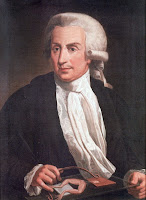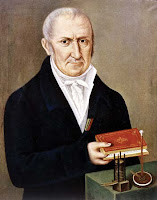Electricity is the set of physical phenomena associated with the presence and flow of electric charge. It is a natural phenomena so it was not discovered. As to who discovered it, many misconceptions abound. Some give credit to Benjamin Franklin for discovering electricity, but his experiments only helped establish the connection between lightning and electricity, nothing more. The truth about the discovery of electricity is bit more complex. The people were aware of electric shocks from catfish long before any knowledge of electricity existed. These fish were referred to as the "protector/Thunderer of Nile" of all other fish. The details of these fish were reported again a millennia later by the Greeks, Romans and Arabics. In about 600 BC, the Ancient Greeks discovered that rubbing fur on amber (fossilized tree resin) caused an attraction between the two – and so what the Greeks discovered was actually static electricity.
Otto von Guericke proved that a vacuum could exist. Creating a vacuum was essential for all kinds of further research into electronics. In 1660, Otto von Guericke invented a machine that produced static electricity, this was the first electric generator.
William Gilbert
The foundation of modern electrical engineering was established in the Elizabethan era. In 1600, William Gilbert who was serving as a physician in the court of Queen Elizabeth published his work De magnete, Magneticisique Corporibus (On the Magnet) which was the research and observation made by him on electricity and magnetism. Gilbert was the one who coined the expression "electrica."Otto von Guericke proved that a vacuum could exist. Creating a vacuum was essential for all kinds of further research into electronics. In 1660, Otto von Guericke invented a machine that produced static electricity, this was the first electric generator.
Robert Boyle realized that attraction and repulsion were mutual and that electric force was transmitted through a vacuum (c.1675). Stephen Gray distinguished between conductors and nonconductors (1729). C. F. Du Fay recognized two kinds of electricity, which Benjamin Franklin and Ebenezer Kinnersley of Philadelphia later named positive and negative.
The Leyden Jar and the Quantitative Era
Progress quickened after the Leyden jar was invented in 1745 by Pieter van Musschenbroek. The Leyden jar stored static electricity, which could be discharged all at once. In 1747 William Watson discharged a Leyden jar through a circuit, and comprehension of the current and circuit started a new field of experimentation. Henry Cavendish, by measuring the conductivity of materials (he compared the simultaneous shocks he received by discharging Leyden jars through the materials), and Charles A. Coulomb, by expressing mathematically the attraction of electrified bodies, began the quantitative study of electricity.
Benjamin Franklin
In 1752, Benjamin Franklin proved that lightning is electricity by conducting "Kite Experiment." In his experiment he used a kite, a key and a storm. This simply proved that lightning and tiny electric sparks were the same thing. A succession of sparks jumping from the key to the back of his hand showed that lightning was indeed electrical in nature. He also explained the apparently paradoxical behaviour of the Leyden jar as a device for storing large amounts of electrical charge in terms of electricity consisting of both positive and negative charges.
Luigi Galvani
In 1791, Luigi Galvani published his discovery of bioelectricity, demonstrating that electricity was the medium by which nerve cells passed signals to the muscles. Galvani made frog muscles twitch by jolting them with a spark from an electrostatic machine.Alessandro Volta
He discovered that particular chemical reactions could produce electricity, and in 1800 he constructed the voltaic pile (an early electric battery) that produced a steady electric current, and so he was the first person to create a steady flow of electrical charge. Volta also created the first transmission of electricity by linking positively-charged and negatively-charged connectors and driving an electrical charge, or voltage, through them.
Hans Christian Oersted
On 21 April 1820, during a lecture, Øersted noticed a compass needle deflected from magnetic north when an electric current from a battery was switched on and off, confirming a direct relationship between electricity and magnetism. His initial interpretation was that magnetic effects radiate from all sides of a wire carrying an electric current, as do light and heat. Three months later he began more intensive investigations and soon thereafter published his findings, showing that an electric current produces a circular magnetic field as it flows through a wire.
André-Marie Ampère
In 1820, Ampère began developing a mathematical and physical theory to understand the relationship between electricity and magnetism. Furthering Øersted’s experimental work, Ampère showed that two parallel wires carrying electric currents attract or repel each other, depending on whether the currents flow in the same or opposite directions, respectively - this laid the foundation of electrodynamics. He also applied mathematics in generalizing physical laws from these experimental results. The most important of these was the principle that came to be called Ampère’s law, which states that the mutual action of two lengths of current-carrying wire is proportional to their lengths and to the intensities of their currents. Ampère also applied this same principle to magnetism, showing the harmony between his law and French physicist Charles Augustin de Coulomb’s law of magnetic action.









0 comments: